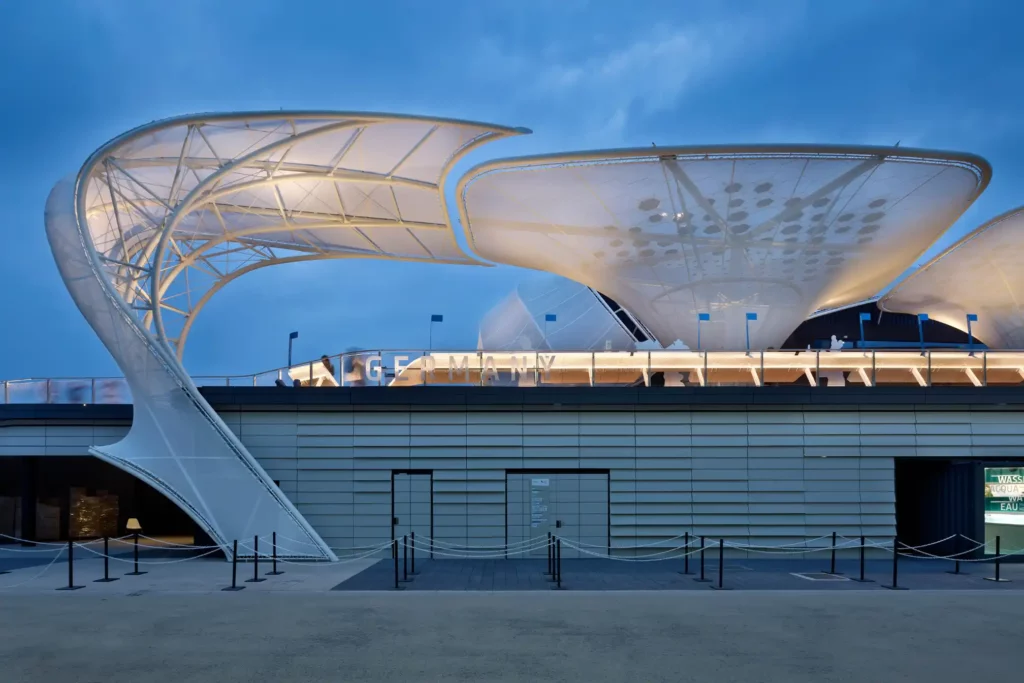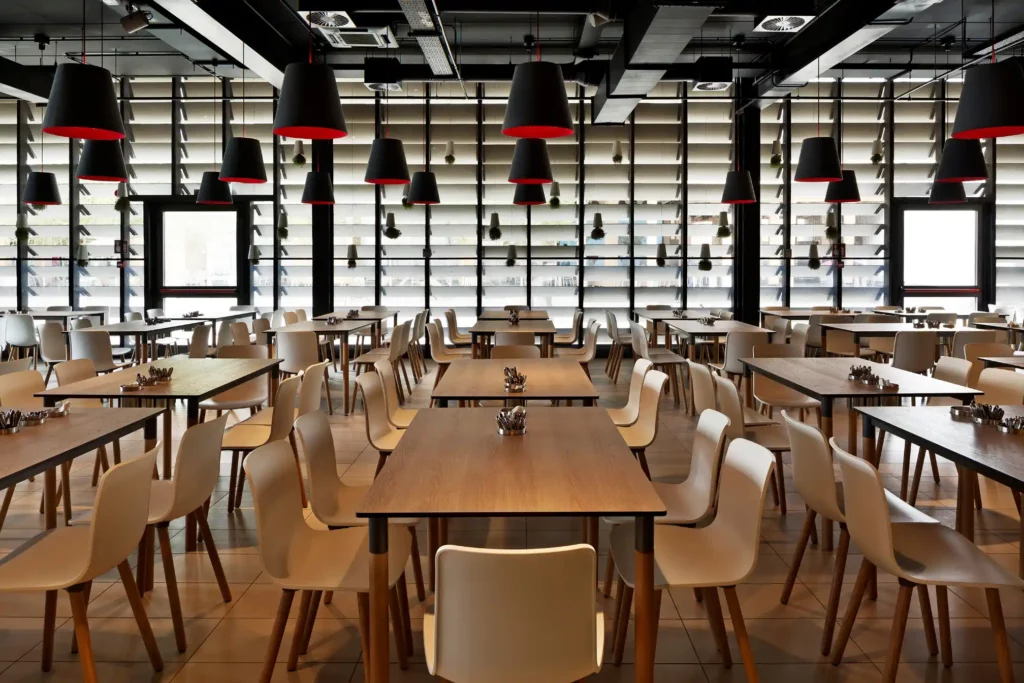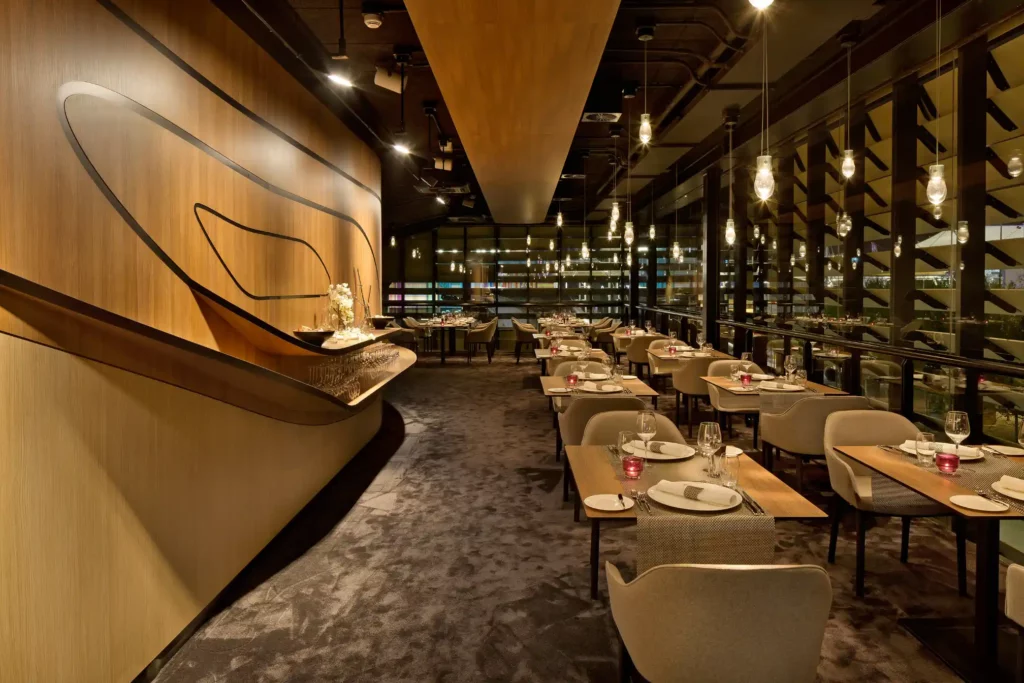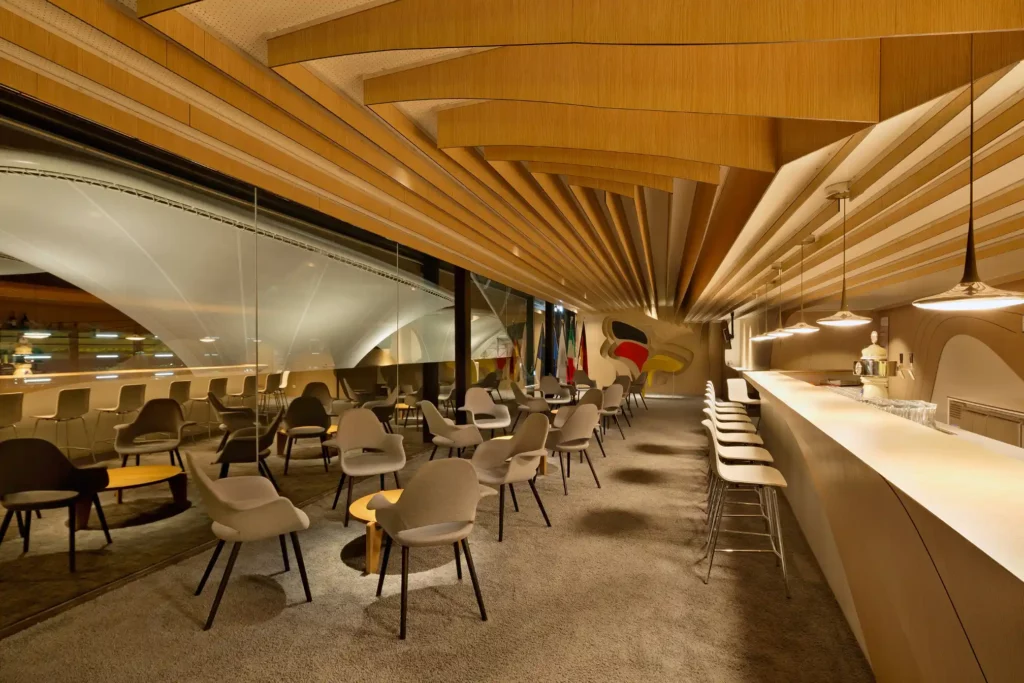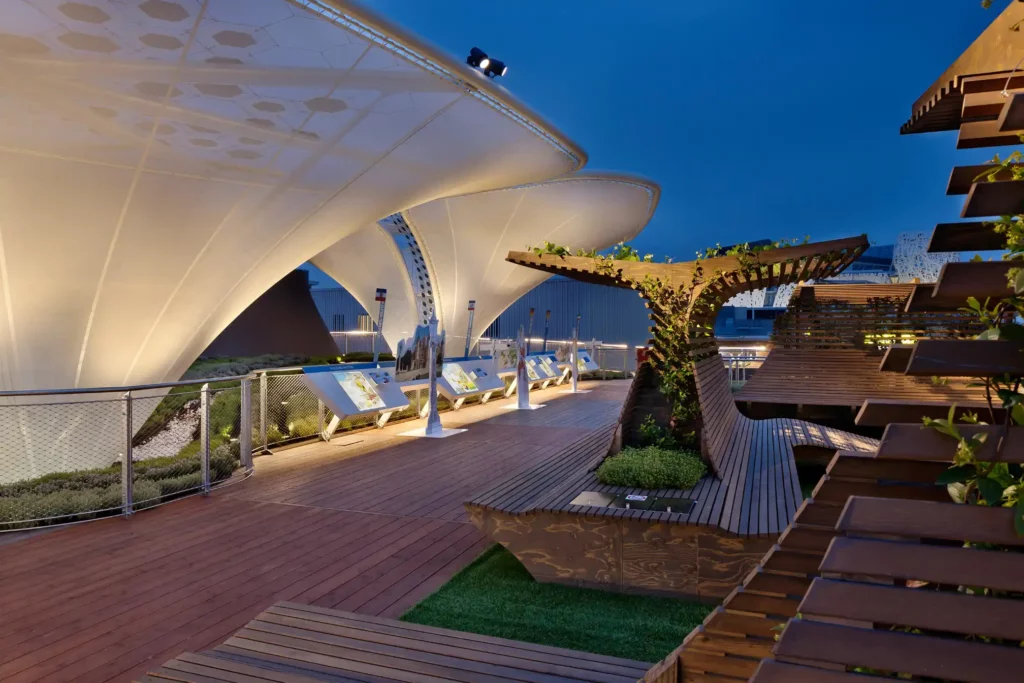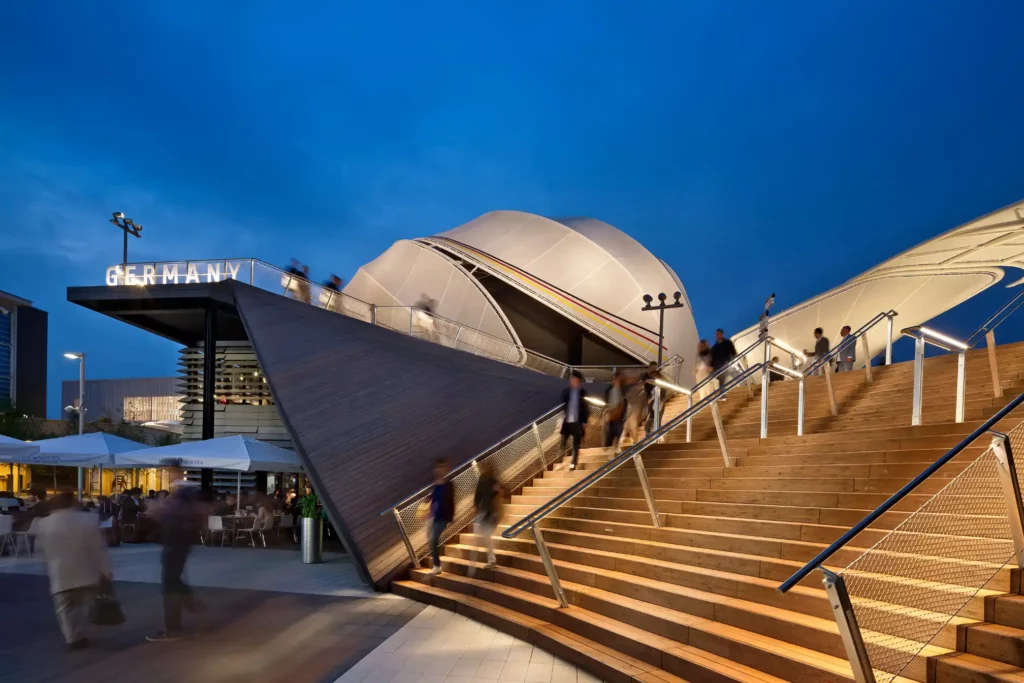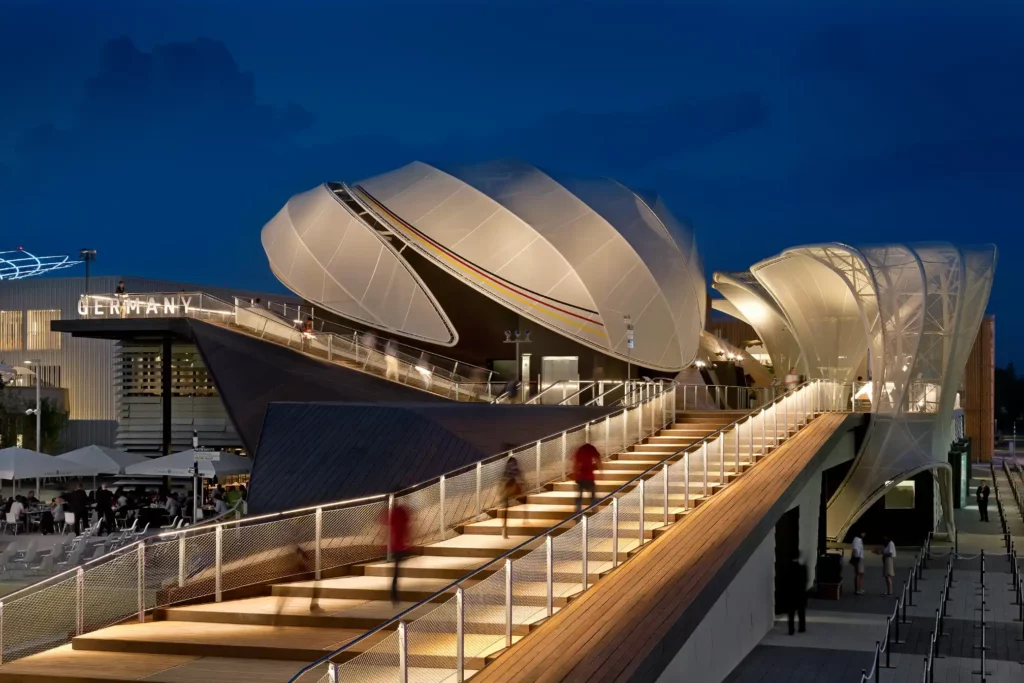
- back
German Pavilion Expo 2015, Milan
CONSTRUCTION MANAGER
Federal Ministry for Economic Affairs and Energy
IMPLEMENTATION COMPANY
Messe Frankfurt GmbH
SPATIAL CONCEPT, ARCHITECTURE AND GENERAL PLANNING
Schmidhuber, Munich
CONTENT CONCEPT, EXHIBITION AND MEDIA
Milla & Partners. Stuttgart
EXECUTION AND PROJECT MANAGEMENT
NUSSLI (Germany) GmbH, Roth
LOCATION
Milan, Italy
STATUS
Realized 2015
- 2015 / DDC Award Good Design - Architecture Award
- 2015 / iF Communication Design Award - Architecture
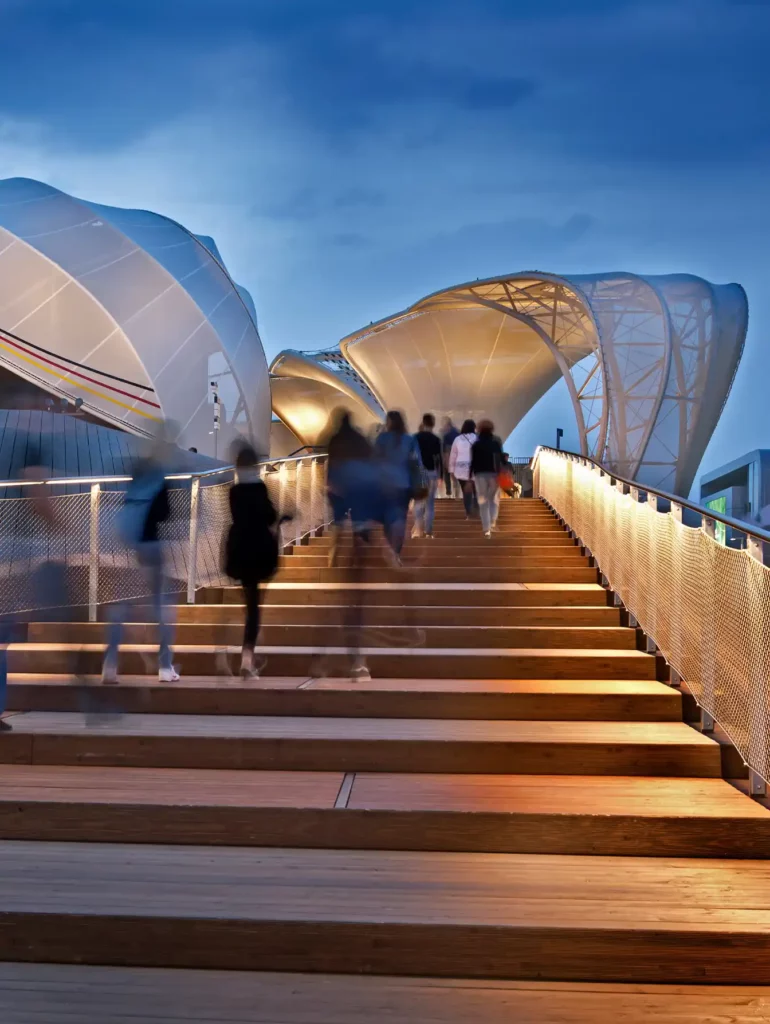
At Expo 2015, Germany presents itself as a vibrant, fertile landscape full of ideas and solutions – born of a new and appreciative approach to nature. The pavilion conveys an open, sympathetic and humorous image of Germany to visitors.
The lighting design takes up the architectural guideline and invites the visitor in the evening with a freshly attractive warm and soft light to explore the freely walkable area.
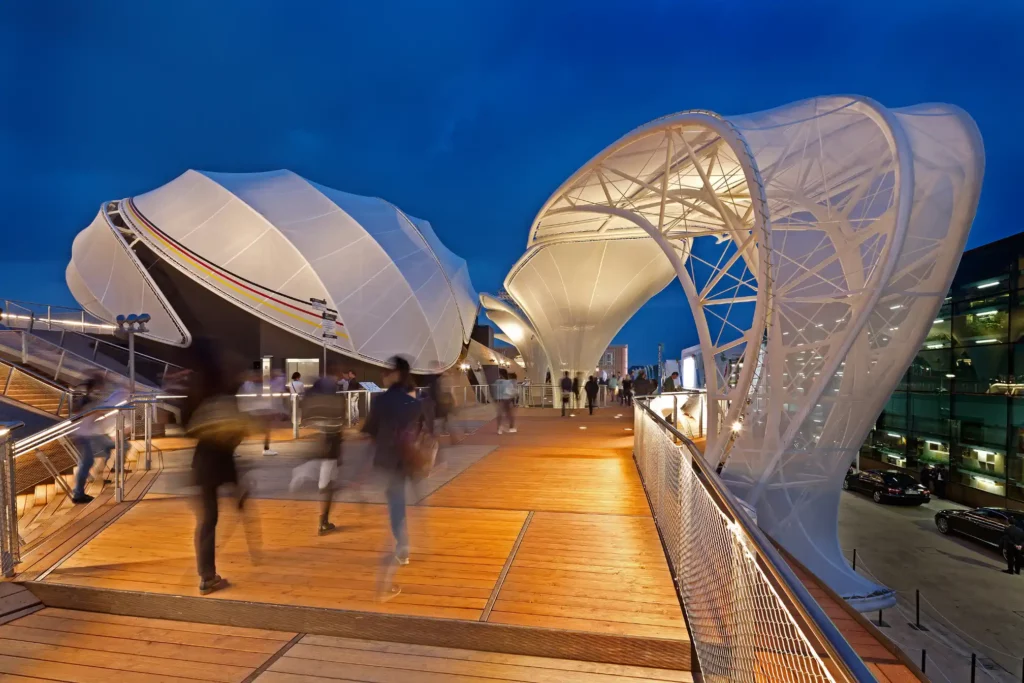
The central design element of the pavilion are the expressive membrane roofs in the shape of emerging plants, the “idea seedlings”. Their construction and bionic design language is derived from nature.
The “idea seedlings” connect indoor and outdoor space, architecture and exhibition, and at the same time provide shade during the hot Italian summer.
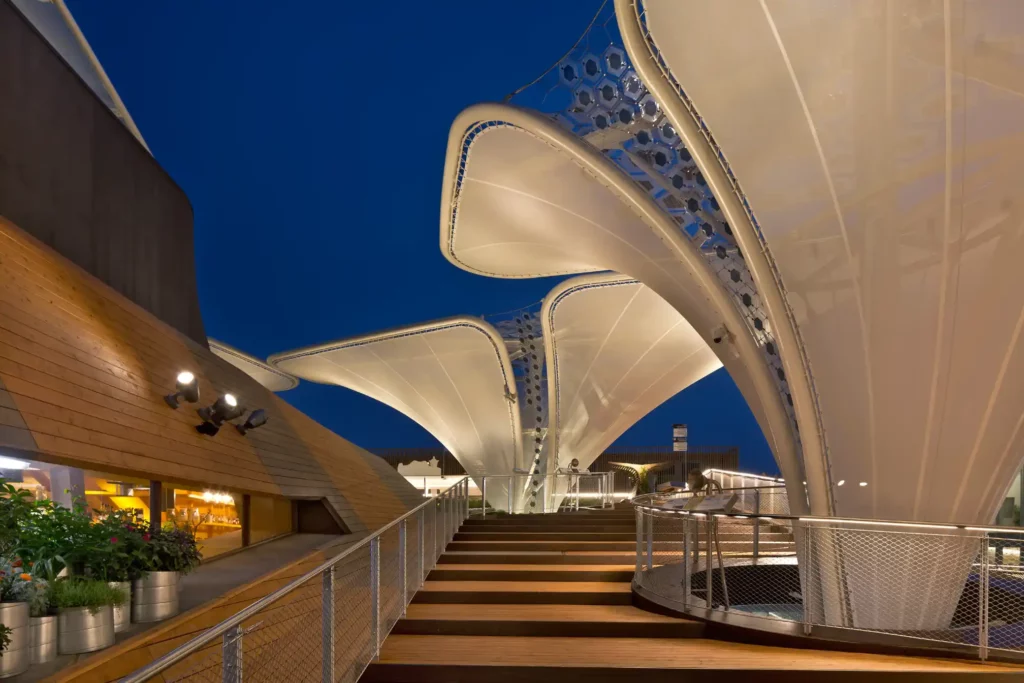
The deliberate fading in of all walkways and the illumination of the plant canopies contributes significantly to the safe orientation of the pavilion visitor. The plant canopies, with their warm-toned appearance, perform a kind of protective function for people – a very important condition for feeling comfortable.
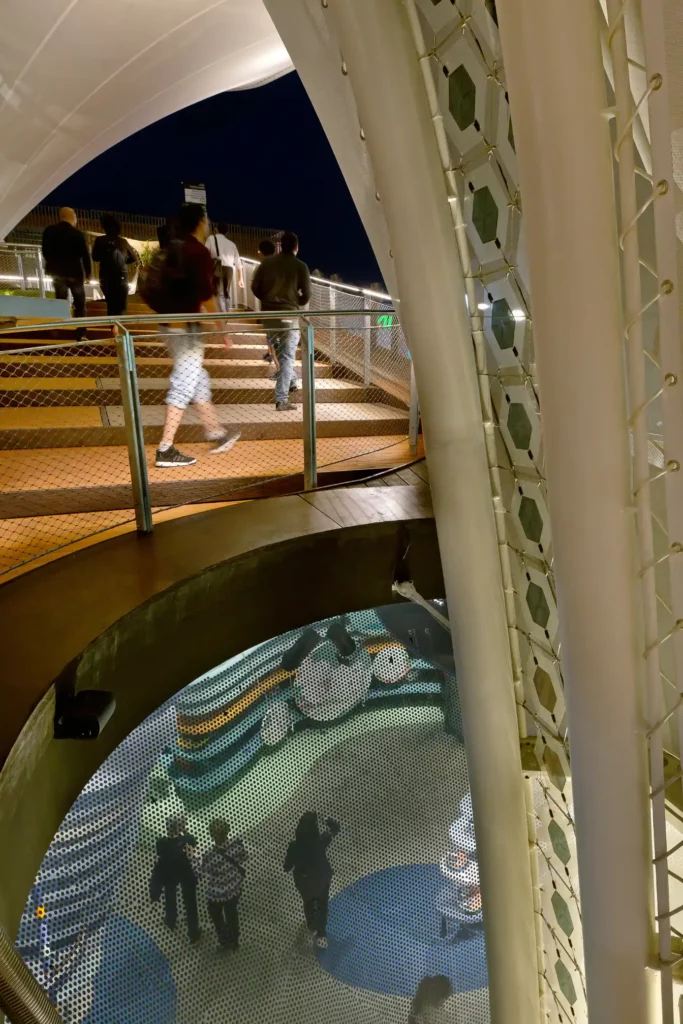
Visitors who take the path to the top of the landscape deck will also encounter the 16 federal states and experience surprising facts about their regions and their culinary specialties.
On the landscape level, the visitor embarks on a pleasurable and sensual journey, characterized by exciting perspectives of the textile leaf canopy.
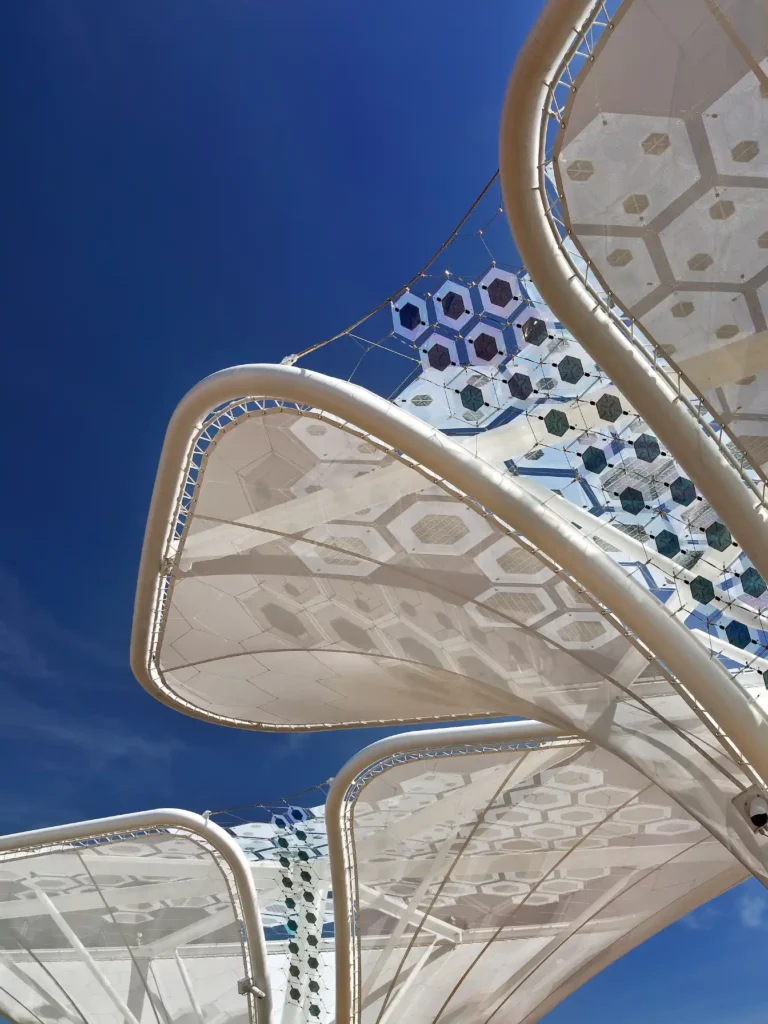
Thanks to the integration of novel organic photovoltaic (OPV) technology, they become the energy-generating “solar trees”.
The German Pavilion is the first major international architectural project to use the innovative products. Unlike conventional solar modules, this technology offers the possibility of designing the flexible, film-integrated OPV modules according to one’s own ideas, right down to their visual appearance, and integrating them into the overall design of the pavilion.
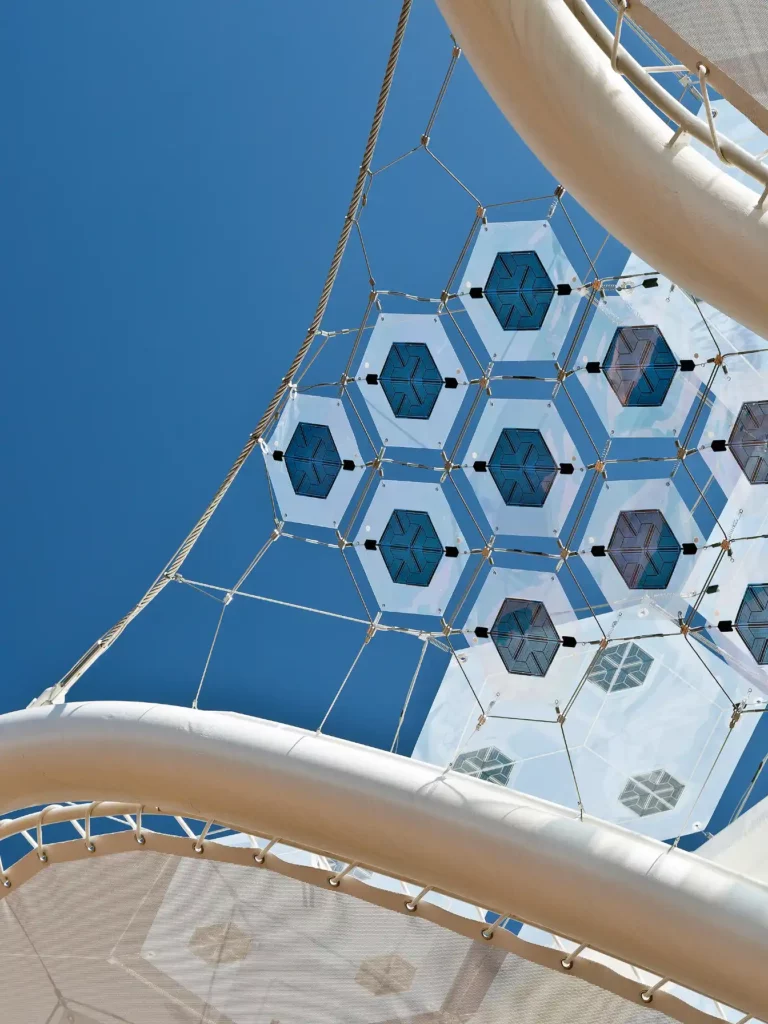
The storage system buffers the solar energy generated in a battery system and is also a pilot project. It differs from existing system in that it is designed for intelligent networking with multiple clients.
A self-contained energy cycle modeled on nature: The Solar Trees are self-sufficient, contribute to reducing external energy use in buildings and thus also to conserving resources.
